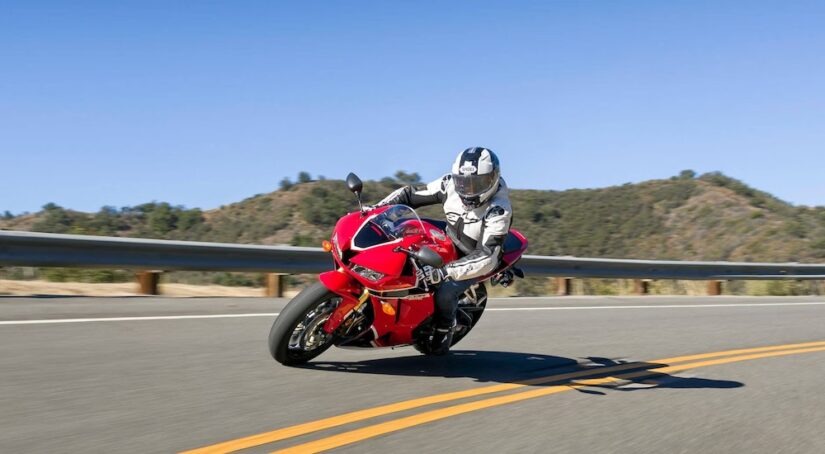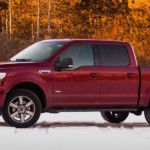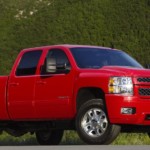There’s a lot to learn when you’re getting into the world of motorcycles. From finding your balance to mastering the clutch, practicing your turns, and learning to keep your heels in, it can be a steep learning curve for fledgling riders, and it’s not made any easier when you start off with the wrong bike. While we understand the urge to gravitate towards the biggest, meanest bike on the lot, these two-wheeled behemoths aren’t always the best choice. The larger and more powerful a bike, the less room for error, which is why the trial-by-fire approach isn’t a great idea when you’re just getting into the motorcycle lifestyle. Think of it this way: you wouldn’t buy a high-end Italian supercar for your 16-year-old, and motorcycles are no different. Starting with a smaller motorcycle holds a number of advantages for new riders, giving them a chance to cut their teeth in a lower-stakes environment that’s less likely to end in tragedy or a costly repair.
Today’s sport bikes tend to hover in the 300cc to 1,000cc range. While many new riders will gravitate towards the middleweight 500cc to 700cc class, we’d recommend going a bit smaller, starting out 400cc, 300cc, or even 250cc while you’re still learning the ropes. Remember: you can always upgrade your bike down the line, but you can’t un-crash a motorcycle that was well beyond your skill level. This is doubly true when it comes to supersport bikes, which have even more power than their engine size would indicate. If you’re asking, “Is a 600cc supersport a good first bike?” the answer is a definitive no. So why not, and what are some of the advantages of starting out small when you begin your own motorcycle journey? We’ll explore all that and more and take a closer look at the supersport category.
What’s So Super?
To understand why a 600cc supersport isn’t a great choice for a first motorcycle, we need to learn a little more about the bike itself. Unlike cruisers, choppers, and touring bikes, sport bikes emphasize top speed, acceleration, and handling above all else. They’re not the most comfortable bike you’ll ever climb on due to the aggressive riding position, and their fuel economy is nothing to write home about, but if you’re looking for a quick, nimble ride that’ll allow you to weave through traffic with ease, the sport category is a solid choice. Typically built with a lightweight frame and brawny inline-four engines, these bikes include all the heavy-duty components necessary to keep that power in check, from enhanced brake pads and multi-piston calipers to large vented rotors and sophisticated suspensions. Aerodynamics is also a big part of the equation, with sport bikes wearing ample fairings and a windscreen to deflect air and reduce drag.
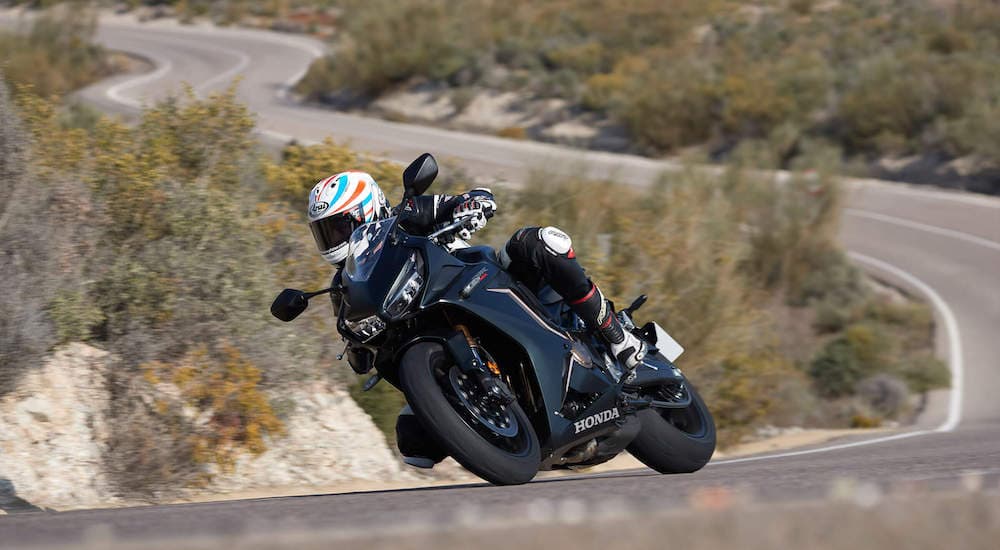
Supersport bikes are basically sport bikes taken to the next level, upgrading almost every aspect of the bike in order to allow riders to truly test their limits. Many supersport bikes are usually just high-performance racing bikes that have been fiddled with enough just to earn the all-important “street legal” designation, which is why so many supersport bikes include “RR” for “racing replica” as part of their names. Honda’s CBR600RR supersport, for instance, has a descriptive moniker that clues riders into the bike’s racing pedigree compared to tamer options like the CBR650R sport bike. Supersport bikes give riders a chance to get a taste of the world of high-performance motorcycle racing, but the attributes that make the segment so thrilling are the same factors that make them such a dicey proposition for beginners.
To be honest, it is tough to even find a true supersport bike that comes in below the 600cc mark, as most bikes in the segment tend to be 600cc or 1,000cc to match the most common motorcycle racing classes. If you’re interested in the supersport category, it might be a good idea to start off with a basic sport bike. Still incredibly fast compared to most vehicles on the road, these bikes tend to be a little more beginner friendly while teaching skills that will help when it comes to supersport bikes. This is due to the fact that sport and supersport bikes tend to be fairly close in their construction. Sure, there are some important differences, such as riding position, electronics, ergonomics, and cost, but a supersport bike still has a lot more in common with a sport bike than, say, a chopper, touring bike, or scooter.
Start Small
There are lots of reasons to go with a less powerful bike when you’re new to riding. While some factors are common sense, others are a little more obscure, which is why we’ve gathered some of the most compelling reasons to start small.
Safety
A small bike might not be the most exciting type of bike (although plenty of riders will argue that smaller bikes can actually be more fun), but it is the safest. While we don’t have any concrete evidence to back this up, we’d be willing to bet there have been a lot fewer casualties ascribed to mopeds and scooters than some of the 1,000cc beasts haunting the highways. Due to their design and the amount that a bike can lean during a turn, sport bikes are one of the more dangerous motorcycle categories out there, a reality that isn’t made any better when you make the jump to the supersport segment. While we’re on the topic, most states require new riders to take a motorcycle safety education class before obtaining their license, but even if your state doesn’t, we’d wholeheartedly recommend making the investment.
Building Skills
The best argument for going with smaller bikes comes down to the learning curve. Simply put, a larger bike is much less forgiving when it comes to the mistakes every new rider is bound to make. Learning to handle and control all that power can be tough, and it’s definitely not easier when you have a high-horsepower engine between your legs. The inline-four 600cc engines are particularly tough to ride because they have very little low-end torque but lots of high-end horsepower, which can be a frustrating combination for a new rider. Smaller single-cylinder and twin-cylinder bikes are easier to handle, which can make the difference between a pleasant ride and one that ends in a dropped bike or worse. Like most things, learning to ride a motorcycle is all about confidence, and if you’re constantly getting bucked off your ride or can’t master some basic cornering techniques, it can be a real blow to the ego.
Insurance
When getting into motorcycles, it’s always a good idea to keep insurance costs front and center in your mind. It’s no secret that motorcycle riding is a dangerous pursuit, and insurance companies are all too aware of that fact. That’s why insurance rates tend to be so high for motorcycles, especially as you begin to climb the ladder to faster bikes. A large, powerful supersport bike might cost two or three times more to insure than a smaller ride, which can be an important consideration if you’re looking to keep to a budget.
Maintenance
Like insurance rates, maintenance costs also tend to balloon when you opt for a larger bike. If you plan on performing all your own repairs and service, that might not be that big of a deal, but for those who rely on their local mechanics to give their motorcycle a little TLC, maintenance costs certainly come into play. Larger motorcycles can also be a bit unwieldy, leading to scrapes and even drops that can quickly grow into big-ticket repairs. Many experienced riders recommend starting out on a naked bike rather than a sport bike because replacing damaged fairings can quickly add up.
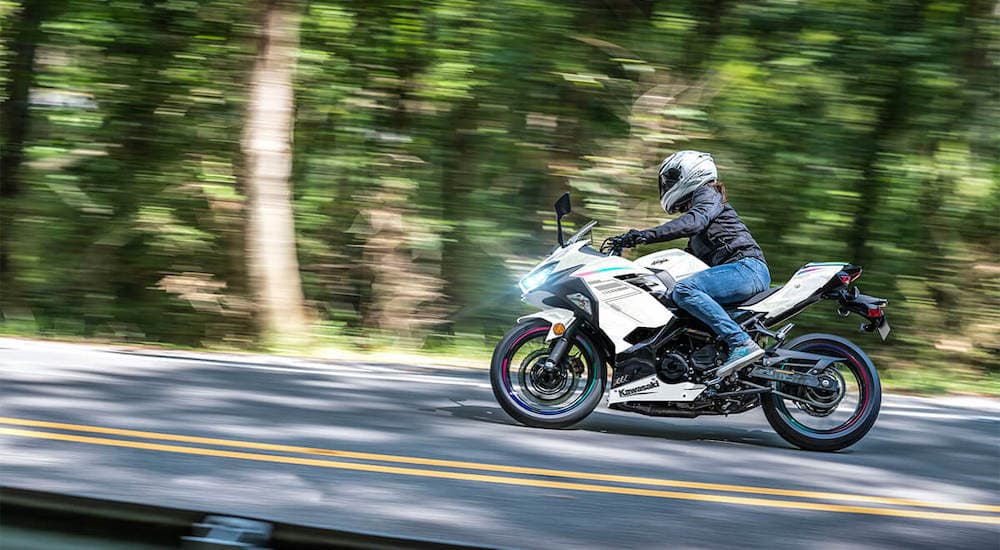
Build Confidence Before Going Big
There’s nothing as freeing as feeling the sun on your face as you cruise down a scenic road on the back of your motorcycle, but that idyllic ride can quickly turn into a white-knuckle experience if you’ve started off with the wrong bike. It’s human nature to want to dive right into the deep end when it comes to a new hobby like motorcycle riding, but it’s important to know your limits and take a moment to reflect on your skill level. Think about a sport like skiing: as cool as it would be to bomb a double diamond or slice through some moguls on your first day out, you’re going to find a lot more success––and have a lot more fun––by sticking to the bunny trails until you’ve worked up a few basic skills and topped up your confidence. Motorcycle riding is no different, rewarding patience and practice and allowing you to take on new challenges as you’re ready for them. So, is a 600cc supersport a good first bike? If you want to keep riding and not scare yourself out of the sport right from the get-go, no.
